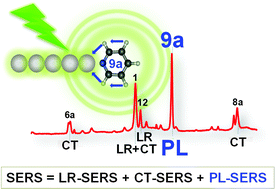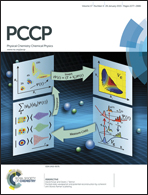The electronic structure of metal–molecule hybrids in charged interfaces: surface-enhanced Raman selection rules derived from plasmon-like resonances†
Abstract
DFT calculations predict that plasmon-like excitations in small metal clusters are able to selectively modify the relative intensities of specific SERS bands of adsorbed molecules. These electronic resonances provide new kinds of SERS selection rules which can explain the huge enhancement of mode 9a of pyridine in the spectra recorded at negative electrode potentials.


 Please wait while we load your content...
Please wait while we load your content...